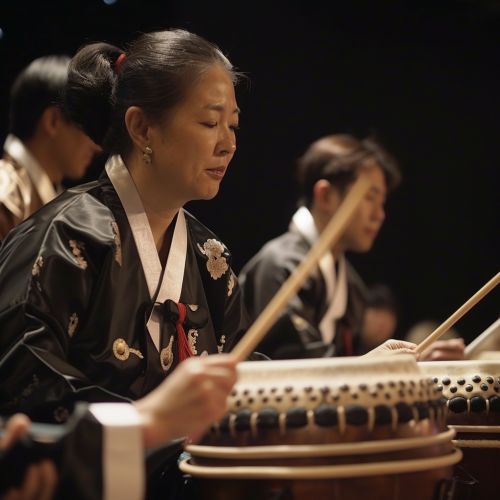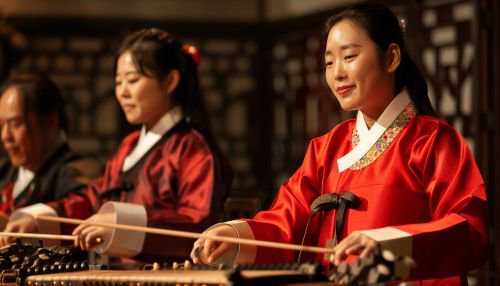Music of South Korea
Overview
The music industry in South Korea is a vibrant and dynamic sector, characterized by a variety of genres and styles that reflect the country's cultural diversity and technological advancements. This article delves into the historical development, genres, and key elements of South Korean music, providing a comprehensive understanding of its unique characteristics and its influence on global music trends.
Historical Background
South Korean music has a rich history that dates back to the prehistoric times. The earliest form of music, known as Samguk Sagi music, was primarily used in rituals and ceremonies. The Goryeo period (918–1392) saw the development of Goryeo Gayo, a form of court music that combined Chinese musical elements with indigenous tunes. The Joseon period (1392–1897) introduced Pansori, a genre of musical storytelling performed by a vocalist and a drummer.


The 20th century brought significant changes to the music scene in South Korea. Western music, introduced during the Japanese occupation (1910–1945), had a profound impact on the development of modern Korean music. Post-liberation, the country saw the emergence of Trot music, a genre that blends Korean and Western musical elements.
The late 20th century marked the birth of K-pop, a genre that has since gained global recognition. The 21st century has seen the continued evolution of South Korean music, with the rise of new genres and the increasing influence of digital technology.
Genres
South Korean music encompasses a wide array of genres, each with its unique characteristics and appeal. These include traditional music, Trot, Ballad, Rock, Hip Hop, and K-pop.
Traditional Music
Traditional Korean music, known as Gugak, is characterized by its unique rhythm and melody. It includes court music, folk music, and religious music. The genre employs traditional instruments such as the Gayageum, a 12-stringed zither, and the Janggu, an hourglass-shaped drum.
Trot
Trot, also known as Ppongtchak, is one of the oldest forms of Korean pop music. It is characterized by its distinctive rhythm, repetitive lyrics, and sentimental melodies. The genre has seen a resurgence in popularity in recent years, thanks to television shows like Miss Trot.
Ballad
The Korean Ballad genre is known for its emotional depth and expressive lyrics. Ballads often feature slow tempos and minimal instrumentation, allowing the vocals to take center stage. This genre has produced many popular artists, including Lee Sun-hee and Kim Bum-soo.
Rock
Korean Rock emerged in the 1960s, influenced by Western rock and roll. The genre has evolved over the decades, incorporating elements of punk, alternative, and indie rock. Notable Korean rock bands include Sanulrim and Crying Nut.
Hip Hop
Korean Hip Hop emerged in the late 1980s and has since grown into a major genre in the South Korean music scene. It is characterized by its complex lyrical content, often addressing social issues. Prominent Korean hip hop artists include Epik High and BTS.
K-pop
K-pop, short for Korean pop music, is a genre that blends elements of pop, rock, hip hop, and electronic dance music. It is known for its catchy melodies, synchronized choreography, and visually stunning music videos. K-pop has gained global popularity, with groups like BTS and Blackpink achieving international success.
Influence and Global Impact
South Korean music has had a significant impact on global music trends, particularly through the rise of K-pop. The genre's global success has led to the increased international recognition of South Korean music and has influenced music trends in various parts of the world. K-pop's influence extends beyond music, impacting fashion, dance, and popular culture globally.
